Subtotal: $248.85
Cisco Catalyst 3650-48PD-S Switch
5 in stock
- 48 10/100/1000 PoE+ and non-PoE models with energy-efficient Ethernet (EEE)
4 x 10 Gigabit Ethernet with SFP+ or 4 x Gigabit Ethernet with SFP (WS-C3650-48xQ-L)
1 RU fixed-configuration
SKU: WS-C3650-48FD-S
$3,670.95 $4,370.00
5 in stock
Compare-
-
Catalyst 3650 series
Cisco Catalyst 3650-24PD-S Switch
- Integrated wireless controller capability with support for up to 50 access points and 1000 wireless clients on each switching entity (switch or stack)
- 24 10/100/1000 data and PoE 390W with energy-efficient Ethernet (EEE) supported port
- 24 100-Mbps and 1-, 2.5-, 5-, and 10-Gbps (multigigabit) Cisco UPOE and PoE+ models with EEE
- 2x10G Uplink ports
- 24-port 10/100/1000 PoE+ models with lower noise and reduced depth of 11.62 inches for shallow depth cabinets in enterprise, retail, and branch-office environments
- Optional Cisco StackWise-160 technology that provides scalability and resiliency with 160 Gbps of stack throughput
- Support for external power system RPS 2300 on the 3650 mini SKUs for power redundancy
SKU: WS-C3650-24PD-S
SKU: WS-C3650-24PD-S
Quick Specs
| Product Code | WS-C3650-48FD-S |
| Enclosure Type | Rack-mountable – 1U |
| Feature Set | IP Base |
| Uplink Interfaces | 2 x 1G SFP, 2 x 10G SFP+
or 4 x 1G SFP uplinks |
| Ports | 48 x 10/100/1000 POE+ Ethernet ports |
| Available PoE Power | 775W |
| Maximum stacking number | 9 |
| Stack bandwidth | 160Gbps |
| Forwarding Performance | 104.16Mpps |
| Switching Capacity | 176Gbps |
| RAM | 4 GB |
| Flash Memory | 2 GB |
| Number of AP per switch/stack | 50 |
| Number of wireless clients per switch/stack | 1000 |
| Dimensions | 44.5 x 48.6 x 4.4 cm |
| Package Weight | 17.49 Kg |
Features and Benefits:
Benefits
Converged Wired plus Wireless Access
The Cisco Catalyst 3650 is a standalone and stackable access switching platform that enables wired plus wireless services on a single Cisco IOS XE Software-based platform. With this, Cisco has pioneered a host of rich capabilities such as high availability based on stateful switchover (SSO) on stacking, granular QoS, security, and Flexible Netflow (FNF) across wired and wireless in a seamless fashion. Also, the wired plus wireless features are bundled into a single Cisco IOS Software image, which reduces the number of software images that users have to qualify/certify before enabling them in their network. The single console port for command-line interface (CLI) management reduces the number of touch points to manage for wired plus wireless services, thereby reducing network complexity, simplifying network operations, and lowering the TCO to manage the infrastructure.
Converged wired plus wireless not only improves wireless bandwidth across the network but also the scale of wireless deployment. Each 48-port Cisco Catalyst 3650 provides 40 Gbps of wireless throughput (20 Gbps on the 24-port model). This wireless capacity increases with the number of members in the stack. This makes sure that the network can scale with current wireless bandwidth requirements, as dictated by IEEE 802.11n-based access points and with future wireless standards such as IEEE 802.11ac. Additionally, the Cisco Catalyst 3650 distributes the wireless controller functions to achieve better scalability. Each Cisco Catalyst 3650 switch/stack can operate as the wireless controller in two modes:
- Mobility agent (MA): This is the default mode in which the Cisco Catalyst 3650 switch ships. In this mode the switch is capable of terminating the CAPWAP tunnels from the access points and providing wireless connectivity to wireless clients. Maintaining wireless client databases and configuring and enforcing security and QoS policies for wireless clients and access points can be enforced in this mode. No additional license on top of IP Base is required to operate in the mobility agent mode.
- Mobility controller (MC): In this mode, the Cisco Catalyst 3650 switch can perform all the mobility agent tasks in addition to mobility coordination, radio resource management (RRM), and Cisco CleanAir® coordination within a mobility subdomain. The mobility controller mode can be enabled on the switch CLI. IP Base license level is required when the Cisco Catalyst 3650 switch is acting as the mobility controller. A centrally located Cisco 5508 Wireless LAN Controller (WLC 5508), Cisco Wireless Services Module 2 (WiSM2) (when running AireOS Version 7.3), and Wireless LAN Controller 5760 can also perform this role for larger deployments. With mobility agents located in the wiring closets providing 40 Gbps of wireless per switch (n x 40 Gbps for a stack of n switches) and mobility controllers managing some of the central wireless functions, the converged access-based wireless deployment provides best-in-class scalability for wireless and significantly improved wireless throughput.
With mobility agents located in the wiring closets providing 40 Gbps of wireless per switch (n x 40 Gbps for a stack of nswitches) and mobility controllers managing some of the central wireless functions, the converged access-based wireless deployment provides best-in-class scalability for wireless and significantly improved wireless throughput.
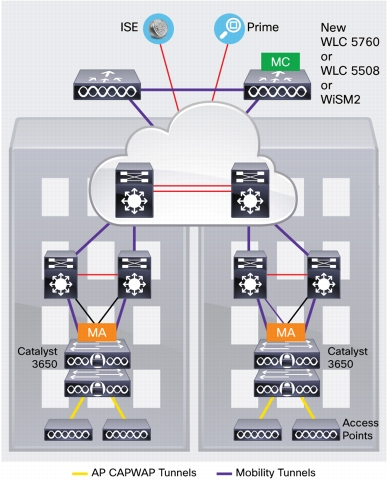
Mobility Controller (MC) and Mobility Agent (MA)
Flexible NetFlow (FNF)
Full visibility into the wired plus wireless traffic is achieved because of the access point Control and Provisioning of Wireless Access Points (CAPWAP) tunnel termination on the switch. This helps identify users and user traffic flows in order to identify potential attackers and take corrective action at the access layer before the attack penetrates further into the network. This is achieved using FNF, which monitors every single flow entering and exiting the switch stack for wired and wireless users. It also helps identify the top wired/wireless talkers and enforce appropriate bandwidth provisioning policies.
QoS
The 3650 switch has advanced wired plus wireless QoS capabilities. It uses the Cisco modular QoS command line interface (MQC). The switch manages wireless bandwidth using unprecedented hierarchical bandwidth management starting at the per-access-point level and drilling further down to per-radio, per-service set identification (SSID), and per-user levels. This helps manage and prioritize available bandwidth between various radios and various SSIDs (enterprise, guest, and so on) within each radio on a percentage basis. The switch is also capable of automatically allocating equal bandwidth among the connected users within a given SSID. This makes sure that all users within a given SSID get a fair share of the available bandwidth while being connected to the network. The UADP ASIC enables the hierarchical bandwidth management and fair sharing of bandwidth, thereby providing hardware-based QoS for optimized performance at line-rate traffic.
In addition to these capabilities, the switch is able to do class of service (CoS) or differentiated services code point (DSCP) based queuing, policing, shaping, and marking of wired plus wireless traffic. This enables users to create common policies that can be used across wired plus wireless traffic. The 3850 also supports downloadable policy names from the Cisco Identity Services Engine (ISE) when a user successfully authenticates to the network using the ISE.
Security
The Cisco Catalyst 3650 provides a rich set of security features for wired plus wireless users. Features such as IEEE 802.1x, Dynamic Host Configuration Protocol (DHCP) snooping, IP Source Guard and control plane protection, wireless intrusion prevention systems (WIPSs), and so on enable protection against unauthorized users and attackers. With a variety of wired plus wireless users connecting to the network, the switch supports session-aware networking, in which each device connected to the network is identified as one session, and unique access control lists (ACLs) and/or QoS policies can be defined and applied using the ISE for each of these sessions, providing better control on the devices connecting to the network.
Resiliency
Cisco StackWise-160 Technology
The Catalyst 3650 supports an optional stacking module that is based on the Cisco StackWise-160 technology. Cisco StackWise-160 technology is built on the highly successful industry-leading StackWise® technology, which is a premium stacking architecture. StackWise-160 has a stack bandwidth of 160 Gbps. StackWise-160 uses Cisco IOS Software SSO for providing resiliency within the stack. The stack behaves as a single switching unit that is managed by an “active” switch elected by the member switches. The active switch automatically elects a standby switch within the stack. The active switch creates and updates all the switching/routing/wireless information and constantly synchronizes that information with the standby switch. If the active switch fails, the standby switch assumes the role of the active switch and continues to the keep the stack operational. Access points continue to remain connected during an active-to-standby switchover. A working stack can accept new members or delete old ones without service interruption. StackWise-160 creates a highly resilient single unified system of up to nine switches, providing simplified management using a single IP address, single Telnet session, single CLI, auto-version checking, auto-upgrading, auto-configuration, and more. StackWise-160 also enables local switching in Cisco Catalyst 3650 Series Switches.
Foundation for Open Network Environment
The heart of the Cisco Catalyst 3650 is the UADP ASIC with programmability for future features and intelligence with investment protection. The new ASIC provides the foundation for converged APIs across wired and wireless, Cisco Open Network Environment, software-defined networking (SDN) readiness and OnePK SDK through software updates over the product lifetime.
Software Features and Services
Software services supported on the Cisco Catalyst 3650 Series Switches can be classified into five broad categories:
Ease of Operations
The Cisco Catalyst 3650 helps reduce the operating costs through:
- Cisco Catalyst Smart Operations
- Easy-to-use deployment and control features
- Efficient switch operations
- Network management tools
Cisco Catalyst Smart Operations
Cisco Catalyst Smart Operations are a comprehensive set of capabilities that simplify LAN deployment, configuration, and troubleshooting. In addition to adaptive, always-on technologies such as StackWise-160, Cisco Catalyst Smart Operations enable zero-touch installation and replacement of switches, fast upgrade, and ease of troubleshooting with reduced operational cost. Cisco Catalyst Smart Operations are a set of features that includes Smart Install, Auto Smartports, Smart Configuration and Smart Troubleshooting to enhance operational excellence:
- Cisco Smart Install is a transparent plug-and-play technology to configure the Cisco IOS Software image and switch configuration without user intervention. Smart Install utilizes dynamic IP address allocation and the assistance of other switches to facilitate installation, providing transparent network plug and play.
- Cisco Auto Smartports provide automatic configuration as devices connect to the switch port, allowing auto-detection and plug and play of the device onto the network.
- Cisco Smart Troubleshooting is an extensive array of debug diagnostic commands and system health checks within the switch, including Generic Online Diagnostics (GOLD) and Onboard Failure Logging (OBFL).
- Embedded Event Manager (EEM) is a powerful and flexible feature that provides real-time network event detection and onboard automation. Using EEM, customers can adapt the behavior of their network devices to align with their business needs. This feature requires the IP Base feature set.
Easy-to-Use Deployment and Control Features
- User experience:
- IP service-level agreements (SLAs) enable customers to assure new business-critical IP applications, as well as IP services that utilize data, voice, and video, in an IP network. This feature requires the IP Services feature set.
- DHCP autoconfiguration of multiple switches through a boot server eases switch deployment.
- Automatic QoS (AutoQoS) simplifies QoS configuration in voice over IP (VoIP) networks by issuing interface and global switch commands to detect Cisco IP phones, classify traffic, and help enable egress queue configuration.
- Autonegotiation on all ports automatically selects half- or full-duplex transmission mode to optimize bandwidth.
- Automatic media-dependent interface crossover (MDIX) automatically adjusts transmit and receive pairs if an incorrect cable type (crossover or straight through) is installed.
- Simplified configuration and connectivity:
- Dynamic Trunking Protocol (DTP) facilitates dynamic trunk configuration across all switch ports.
- Port Aggregation Protocol (PAgP) automates the creation of Cisco Fast EtherChannel groups or Gigabit EtherChannel groups to link to another switch, router, or server.
- Link Aggregation Control Protocol (LACP) allows the creation of Ethernet channeling with devices that conform to IEEE 802.3ad. This feature is similar to Cisco EtherChannel technology and PAgP.
- Unidirectional Link Detection Protocol (UDLD) and aggressive UDLD allow unidirectional links caused by incorrect fiber-optic wiring or port faults to be detected and disabled on fiber-optic interfaces.
- Cisco VLAN Trunking Protocol (VTP) Version 3 supports dynamic VLANs and dynamic trunk configuration across all switches.
- Efficient switch operation:
- Switching database manager (SDM) templates, VLAN template (specific to LAN Base license level), and advanced template allow the administrator to automatically optimize the ternary content-addressable memory (TCAM) allocation to the desired features based on deployment-specific requirements.
- Local proxy Address Resolution Protocol (ARP) works in conjunction with private VLAN edge to minimize broadcasts and maximize available bandwidth.
- Stacking master configuration management with Cisco StackWise-480 technology helps make sure that all switches are automatically upgraded when the master switch receives a new software version. Automatic software version checking and updating help ensure that all stack members have the same software version.
- Trivial File Transfer Protocol (TFTP) reduces the cost of administering software upgrades by downloading from a centralized location.
- Network Timing Protocol (NTP) provides an accurate and consistent timestamp to all intranet switches.
- Multicast:
- Optimized multicast for wired plus wireless: Cisco Catalyst 3850 offers greater multicast efficiency by receiving only one multicast stream and replicating it for all connected wired plus wireless devices connected to that switch.
- Internet Group Management Protocol (IGMP) v1, v2, v3 snooping for IPv4: multicast listener discovery (MLD) v1 and v2 snooping provides fast client joins and leaves of multicast streams and limits bandwidth-intensive video traffic to only the requestors.
- Monitoring:
- Remote Switch Port Analyzer (RSPAN) allows administrators to remotely monitor ports in a Layer 2 switch network from any other switch in the same network.
- For enhanced traffic management, monitoring, and analysis, the Embedded Remote Monitoring (RMON) software agent supports four RMON groups (history, statistics, alarms, and events).
- Layer 2 traceroute eases troubleshooting by identifying the physical path that a packet takes from source to destination.
- Wireless RF management provides both real-time and historical information about RF interference affecting network performance across controllers using systemwide Cisco CleanAir technology integration.
Efficient Switch Operation
Cisco Catalyst 3650 Series Switches, designed and engineered by Cisco, provide optimum power-saving, EEE, low-power operations for industry best-in-class power management and power consumption capabilities. The Cisco Catalyst 3650 ports are capable of reduced power modes so that ports not in use can move into a lower power utilization state. Other efficient switch operation features are:
- Cisco Discovery Protocol Version 2 allows the Cisco Catalyst 3850 Series Switches to negotiate a more granular power setting when connecting to a Cisco powered device such as IP phones or access points than what is provided by IEEE classification.
- Per-port power consumption command allows customers to specify maximum power setting on an individual port. Per-port PoE power sensing measures actual power being drawn, enabling more intelligent control of powered devices.
- The PoE MIB provides proactive visibility into power usage and allows customers to set different power-level thresholds.
Environmentally Responsible
Organizations may choose to turn off access point radios to reduce power consumption during off-peak hours. The integrated wireless LAN controller avoids the deployment of additional devices in the network.
Network Management Tools
The Cisco Catalyst 3650 Series Switches offer both a superior CLI for detailed configuration and Cisco Prime™ infrastructure for unified wired plus wireless management. Prime infrastructure provides day 0 and ongoing provisioning, ongoing monitoring and maintenance, configuration templates, and device and user 360-degree views and serves as the FNF collector for user traffic views using the Prime Assurance Manager module.
Advanced Security Features
Cisco Catalyst 3650 Series Switches support advanced security features including but not limited to:
- Protection against attackers:
- Port security secures the access to an access or trunk port based on MAC address. It limits the number of learned MAC addresses to deny MAC address flooding.
- DHCP snooping prevents malicious users from spoofing a DHCP server and sending out bogus addresses. This feature is used by other primary security features to prevent a number of other attacks such as ARP poisoning.
- Dynamic ARP inspection (DAI) helps ensure user integrity by preventing malicious users from exploiting the insecure nature of ARP.
- IP source guard prevents a malicious user from spoofing or taking over another user’s IP address by creating a binding table between the client’s IP and MAC address, port, and VLAN.
- The Unicast Reverse Path Forwarding (RPF) feature helps mitigate problems caused by the introduction of malformed or forged (spoofed) IP source addresses into a network by discarding IP packets that lack a verifiable IP source address.
- Bidirectional data support on the SPAN port allows the Cisco intrusion detection system (IDS) to take action when an intruder is detected.
- User authentication:
- Flexible authentication that supports multiple authentication mechanisms, including 802.1X, MAC authentication bypass, and web authentication using a single, consistent configuration.
- RADIUS change of authorization and downloadable calls for comprehensive policy management capabilities.
- Private VLANs restrict traffic between hosts in a common segment by segregating traffic at Layer 2, turning a broadcast segment into a nonbroadcast multiaccess like segment. Private VLAN edge provides security and isolation between switch ports, which helps ensure that users cannot snoop on other users’ traffic.
- Multidomain authentication allows an IP phone and a PC to authenticate on the same switch port while placing them on appropriate voice and data VLAN.
- MAC address notification allows administrators to be notified of users added to or removed from the network.
- Mobility and security for secure, reliable wireless connectivity and consistent end-user experience. Increased network availability through proactive blocking of known threats.
- IGMP filtering provides multicast authentication by filtering out nonsubscribers and limits the number of concurrent multicast streams available per port.
- ACLs:
- Cisco security VLAN ACLs on all VLANs prevent unauthorized data flows from being bridged within VLANs.
- Cisco standard and extended IP security router ACLs define security policies on routed interfaces for control-plane and data-plane traffic. IPv6 ACLs can be applied to filter IPv6 traffic.
- Port-based ACLs for Layer 2 interfaces allow security policies to be applied on individual switch ports.
- Device access:
- Secure Shell (SSH) Protocol, Kerberos, and Simple Network Management Protocol Version 3 (SNMPv3) provide network security by encrypting administrator traffic during Telnet and SNMP sessions. SSH Protocol, Kerberos, and the cryptographic version of SNMPv3 require a special cryptographic software image because of U.S. export restrictions.
- TACACS+ and RADIUS authentication facilitates centralized control of the switch and restricts unauthorized users from altering the configuration.
- Multilevel security on console access prevents unauthorized users from altering the switch configuration.
- Bridge protocol data unit (BPDU) Guard shuts down Spanning Tree PortFast-enabled interfaces when BPDUs are received to avoid accidental topology loops.
- Spanning Tree Root Guard (STRG) prevents edge devices not in the network administrator’s control from becoming Spanning Tree Protocol root nodes.
- Wireless end-to-end security offers CAPWAP-compliant DTLS encryption to make sure of encryption between access points and controllers across remote WAN/LAN links.
Resiliency
Borderless networks enable enterprise mobility and business-grade video services. Industry’s first unified network (wired plus wireless) location services enable tracking of mobile assets and the users of those assets for both wired plus wireless devices. The true borderless experience is enabled by the following feature sets in the Cisco Catalyst 3650 Series Switches:
- High availability
- High-performance IP routing
- Superior QoS
High Availability
In addition to StackWise-160, the Cisco Catalyst 3650 Series supports high-availability features including but not limited to the following:
- Cross-Stack EtherChannel provides the ability to configure Cisco EtherChannel technology across different members of the stack for high resiliency.
- Flexlink provides link redundancy with convergence time less than 100ms.
- IEEE 802.1s/w Rapid Spanning Tree Protocol (RSTP) and Multiple Spanning Tree Protocol (MSTP) provide rapid spanning-tree convergence independent of spanning-tree timers and also offer the benefit of Layer 2 load balancing and distributed processing. Stacked units behave as a single spanning-tree node.
- Per-VLAN Rapid Spanning Tree (PVRST+) allows rapid spanning-tree reconvergence on a per-VLAN spanning-tree basis, without requiring the implementation of spanning-tree instances.
- Switch-port autorecovery (Err-disable) automatically attempts to reactivate a link that is disabled because of a network error.
High-Performance IP Routing
The Cisco Express Forwarding hardware routing architecture delivers extremely high-performance IP routing in the Cisco Catalyst 3650 Series Switches:
- IP unicast routing protocols (static, Routing Information Protocol Version 1 [RIPv1], and RIPv2, RIPng, Enhanced Interior Gateway Routing Protocol [EIGRP] stub) are supported for small-network routing applications with the IP Base feature set. Limited static routing with the LAN Base feature set. Equal-cost routing facilitates Layer 3 load balancing and redundancy across the stack.
- Advanced IP unicast routing protocols (Open Shortest Path First [OSPF], EIGRP, Border Gateway Protocol Version 4 [BGPv4], and Intermediate System-to-Intermediate System Version 4 [IS-ISv4]) are supported for load balancing and constructing scalable LANs. IPv6 routing (OSPFv3, EIGRPv6) is supported in hardware for maximum performance. OSPF for routed access is included in the IP Base image. The IP Services feature set is required for full OSPF, EIGRP, BGPv4, and IS-ISv4.
- Policy-based routing (PBR) allows superior control by facilitating flow redirection regardless of the routing protocol configured. Virtual routing and forwarding (VRF)-Lite enables a service provider to support two or more VPNs, with overlapping IP addresses. The IP Services feature set is required.
- Protocol-independent multicast (PIM) for IP multicast routing is supported, including PIM sparse mode (PIM-SM), PIM dense mode (PIM-DM), PIM sparse-dense mode, and source-specific multicast (SSM). The IP Services feature set is required.
- IPv6 addressing is supported on interfaces with appropriate show commands for monitoring and troubleshooting.
Superior QoS
The Cisco Catalyst 3650 Series offers Gigabit Ethernet speed with intelligent services that keep traffic flowing smoothly, even at 10 times the normal network speed. Industry-leading mechanisms for cross-stack marking, classification, and scheduling deliver superior performance for data, voice, and video traffic, all at wire speed.
The following are some of the QoS features supported in the Cisco Catalyst 3650 Series Switches:
- Granular wireless bandwidth management and fair sharing use Cisco’s proven Cisco IOS Software and UADP ASIC technology to provide hierarchical bandwidth management at line rate (per access point, per radio, per SSID, per client-based policies). Fair sharing across the users within an SSID makes sure that no single user is starved because of other heavy-hitting users. Fair sharing is automatically enabled for wireless at user level as well as SSID level.
- 802.1p CoS and DSCP field classification is provided, using marking and reclassification on a per-packet basis by source and destination IP address, MAC address, or Layer 4 Transmission Control Protocol/User Datagram Protocol (TCP/UDP) port number.
- Shaped round robin (SRR) scheduling helps ensure differential prioritization of packet flows by intelligently servicing the ingress queues and egress queues. Weighted tail drop (WTD) provides congestion avoidance at the ingress and egress queues before a disruption occurs. Strict priority queuing helps ensure that the highest priority packets are serviced ahead of all other traffic.
- The Cisco committed information rate (CIR) function provides bandwidth in increments as low as 8 Kbps.
- Rate limiting is provided based on source and destination IP address, source and destination MAC address, Layer 4 TCP/UDP information, or any combination of these fields, using QoS ACLs (IP ACLs or MAC ACLs), class maps, and policy maps.
- Eight egress queues per port for wired traffic and four egress queues for wireless help enable differentiated management of different traffic types across the stack for wired traffic. Up to 2000 aggregate policers are available per switch.
Application Visibility and Control Using Flexible NetFlow
Cisco IOS Software FNF is the next generation in flow visibility technology, allowing optimization of the network infrastructure, reducing operation costs, and improving capacity planning and security incident detection with increased flexibility and scalability. The Cisco Catalyst 3650 provides optimized application visibility with FNF across wired plus wireless. The switch is capable of 48,000 flow entries on 48-port models and 24,000 flow entries on 24-port models across wired and wireless. With UADP ASIC, Cisco Catalyst 3650 delivers next-generation flow technology with unprecedented flexibility and comprehensive visibility extending from Layer 2 (MAC and VLAN) to Layer 4 (TCP/UDP) flags and so on across wired plus wireless traffic. The Cisco Catalyst 3650 switch is Medianet capable to provide visibility and troubleshooting capabilities across wired plus wireless video traffic. Specific Medianet features will be enabled in future software updates.
The flow data collected by FNF can be exported to an external collector for analysis and reporting or tracked by the EEM. The Cisco Catalyst 3650 enables powerful on-box and customizable event correlation and policy actions with EEM, allowing the switches to trigger customized event alarms or policy actions when the predefined condition is met. With no external appliance required, customers are able to use existing infrastructure to perform traffic monitoring, making traffic analysis economical even on a large IP network.
High-performance video over wireless integrates Cisco VideoStream technology to optimize the delivery of video applications across the WLAN.
Wired plus wireless IP telephony supports unified communications for improved collaboration through messaging, presence, and conferencing and supports all Cisco Unified Communications wireless IP phones for cost-effective, real-time voice service.
| Brands | Cisco Systems |
|---|
Technical Specifications:
| Performance Numbers for All Switch Models | |
|---|---|
| Description | Specification |
| Switching Fabric | 176 Gbps on 48-port models 88 Gbps on 24-port models |
| Stacking bandwidth | 160 Gbps |
| Total number of MAC addresses | 32,000 |
| Total number of IPv4 routes (ARP plus learned routes) | 24,000 |
| FNF entries | 48,000 flow on 48-port models 24,000 flows on 24-port models |
| DRAM | 4 Gb |
| Flash | 2 Gb |
| VLAN IDs | 4,000 |
| Total switched virtual interfaces (SVIs) | 1,000 |
| Jumbo frame | 9198 bytes |
| Total routed ports per 3850 stack | 208 |
| Wireless | |
| Number of access points per switch/stack | 25 |
| Number of wireless clients per switch/stack | 1000 |
| Total number of WLANs per switch | 64 |
| Wireless bandwidth per switch | Up to 40 Gbps on 48-port models Up to 20 Gbps on 24-port models |
| Supported Aironet access point series | 3600, 3500, 2600, 1600, 1260, 1140, 1040 |
| Environmental Ranges | ||||
|---|---|---|---|---|
| Description | Specification | |||
| With AC Power Supply Operating Environment and Altitude |
Normal Operating Temperature and Altitudes: -5ºC to +45ºC, up to 5000 feet (1500m) -5ºC to +40ºC, up to 10,000 feet (3000m) -5ºC to +35ºC, up to 13,000 feet (4000m) -5ºC to +30ºC, up to 16,400 feet (5000m)Short-Term* Exceptional Conditions: -5ºC to +50ºC, up to 5000 feet (1500m) -5ºC to +45ºC, up to 10,000 feet (3000m) -5ºC to +40ºC, up to 13,000 feet (4000m) -5ºC to +35ºC, up to 16,400 feet (5000m) -5ºC to +45ºC, at sealevel with single fan failure* Not more than following in one year period: 96 consecutive hours, or 360 hours total, or 15 occurrences |
|||
| With DC Power Supply Operating Environment and Altitude (NEBS) |
Normal Operating Temperature and Altitudes: -5ºC to +45ºC, up to 6000 feet (1800m) -5ºC to +40ºC, up to 10,000 feet (3000m) -5ºC to +35ºC, up to 13,000 feet (4000m) -5ºC to +30ºC, up to 16,400 feet (5000m)Short-Term* Exceptional Conditions: -5ºC to +55ºC, up to 6000 feet (1800m) -5ºC to +50ºC, up to 10,000 feet (3000m) -5ºC to +45ºC, up to 13,000 feet (4000m) -5ºC to +40ºC, up to 16,400 feet (5000m) -5ºC to +45ºC, at sealevel with single fan failure* Not more than following in one year period: 96 consecutive hours, or 360 hours total, or 15 occurrences |
|||
| Acoustic Noise Measured per ISO 7779 & Declared per ISO 9296 Bystander positions operating to an ambient temperature of 25°C |
With AC or DC power supply (with 16 PoE+ ports loaded): LpA: 45dB typical, 48dB maximum LwA: 5.5B typical, 5.8B maximum Typical: Noise emission for a typical configuration Maximum: Statistical maximum to account for variation in production |
|||
| Relative Humidity | 10% to 95%, noncondensing | |||
| Storage Environment | Temperature: -40 to 158º F (-40 to 70º C) Altitude: 16,400 ft (5,000 m) |
|||
| Vibration | Operating: 0.41Grms from 3 to 500Hz with spectral break points of 0.0005 G2/Hz at 10Hz and 200Hz 5dB/octave roll off at each end. Nonoperating: 1.12Grms from 3 to 500Hz with spectral break points of 0.0065 G2/Hz at 10Hz and 100Hz 5dB/octave roll off at each end. |
|||
| Shock | Operating: 30G, 2ms Half sine Nonoperating: 55G, 10ms Trapezoid |
|||
| Connectors and LED Indicators | ||||
| Description | Specification | |||
| Connectors and Cabling |
|
|||
| Power Connectors |
|
|||
| Mechanical Specifications | ||||
|---|---|---|---|---|
| Dimensions | Inches (H x W x D) | Centimeters (H x D x W) | ||
| WS-C3650-24T | 1.73 x 17.5 x 17.625 | 4.4 x 44.5 x 44.8 | ||
| WS-C3650-24P | 1.73 x 17.5 x 17.625 | 4.4 x 44.5 x 44.8 | ||

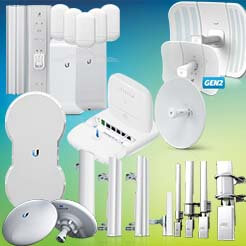






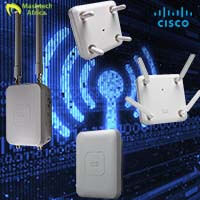

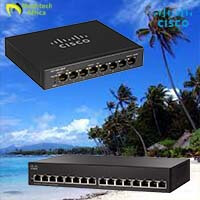

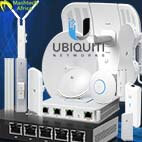



 TELTONIKA DIN59VAR DIN rail Kit for RUT9xx & RUT5xx & RUT2xx
TELTONIKA DIN59VAR DIN rail Kit for RUT9xx & RUT5xx & RUT2xx 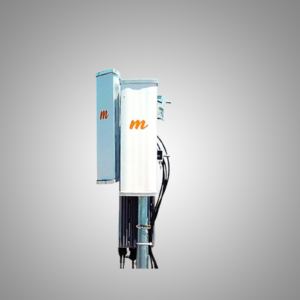 MIMOSA N5-45x2 Sector Antenna (MIMOSA_N5-45x2)
MIMOSA N5-45x2 Sector Antenna (MIMOSA_N5-45x2) 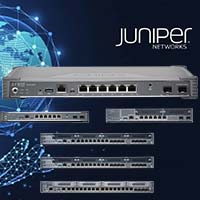













There are no reviews yet.